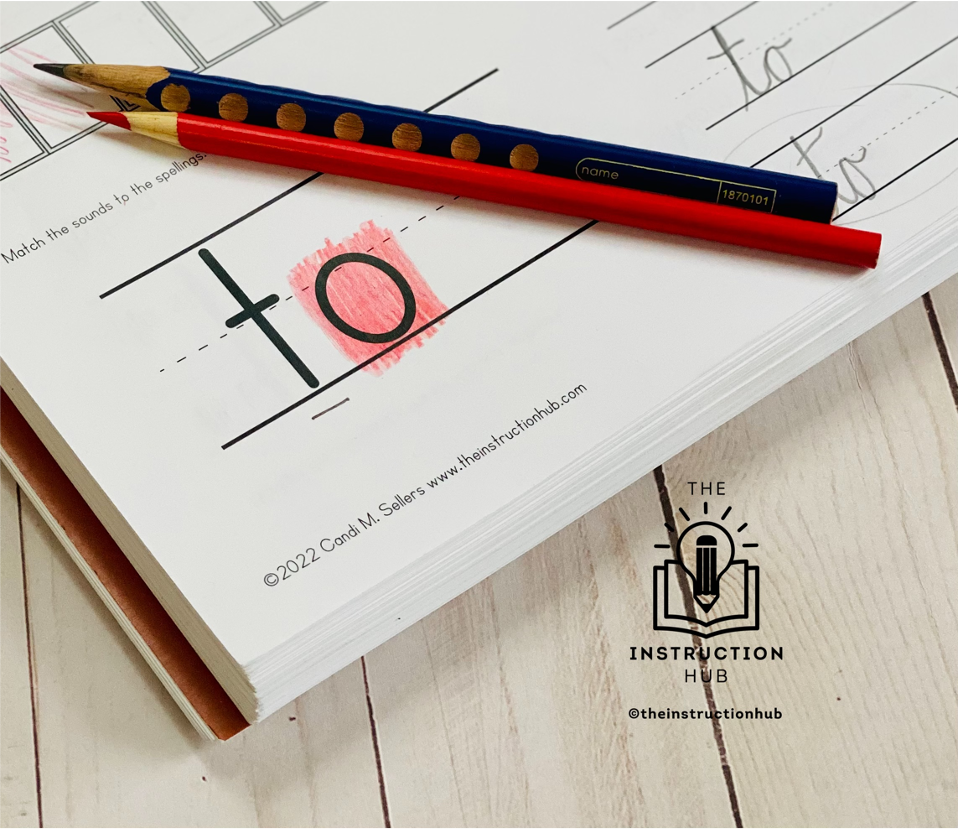How Have I Changed My "Sight Word" Instruction?
I have a confession.
I have had to go back and revisit my “sight word” instruction for the last fifteen years. I am fully admitting that as I have read new, and for that matter old(er), research about how we should truly define a sight word, I have had to think about my own thinking. I have also grown in my own approach to how to provide instruction for words of all sorts. Isn’t that what we should do? Reflect on research to make sure our current practices are accurate. So here is a brief synthesis, and for more, I would invite you to attend one of my “No Need to Memorize” webinars that you can find here.
I have gone back and grouped all of Fry’s First 100 Words, and the Dolch word lists pre-primer to third grade based on pattern, syllable type, or similar irregularity. By linking back to previous learning or logically grouping them, students have a hook to put new learning on as they begin to map more words. I have created word mats that follow the strategy below so that students are given systematic instruction and practice. You can find these charts with categories and the word mats in my book Once Upon an Irregular and High-Frequency Word. Click here to check it out.
So what do I do differently now? Read on and see the steps I use to walk my students through addressing the regular and irregular words of our language.
First, we must consider our definition of terms and emphasize that a sight word can be regular (it follows predictable patterns and sounds, and is decodable) or irregular (does not entirely follow the patterns and sounds of our language). These are not words we need to memorize. As Joan Sedita from Keys to Literacy explains, a sight word is “Any word that a reader instantly recognizes and identifies without conscious effort.”
What steps do I use?
Start with the sound. I begin by having the student say the entire word. I am checking for accurate pronunciation, and I will eventually want to bond the pronunciation to the spelling. I have the student identify how many sounds they hear in the word. This engages the phonological component to understand the word.
I have the students match the sounds to the spellings in each word. The student will use phoneme-grapheme knowledge (the sounds and the symbols that represent them) to make sense of the parts that are playing fair and the unexpected parts. This engages the orthographic component to understand the word. By matching the sound to the symbol, students can use partial decoding to analyze the word. For example, with the word said. The s and d represent the expected sounds of /s/ and /d/. The ai is not representing an expected sound. We typically think of ai spelling the sound of long /a/. Often, the consonants offer support for partial decoding.
3. If appropriate or helpful, this is where we discuss the meaning or any word origin notes that would be helpful in understanding the word. For example, the number word two shares the tw spelling that is often associated with words that have to do with 2, like twice, twin, and twenty.
4. I then have my students use the S.O.S (Simultaneous Oral Spelling) technique. Through this strategy, the student verbalizes the letters in sequence as they write them out. Spelling supports reading and should be included. I can be flexible with expectations about spelling based on the age of my learner. Perhaps, my goal is just reading the word. Still, using spelling to support reading is a powerful tool.
5. I also allow students to read the word within connected text. We not only want students to recognize and read the words in single-word lists, but also within phrases and sentences.
6. I then ask the students to write a sentence with the focus word, or I provide a sentence with the focus word. I would like them not only to read in connected text, but spell the word in connected text as well.
7. I end by asking them to trace on the table and verbalize the spelling of the target word.
Instruction shouldn’t be left to chance. Providing direct, explicit, and systematic instruction will support students in reading and spelling previously inaccessible words. We do not have to rely on the old saying, “you just have to memorize.” There are strategies to guide students. What do you say? Will you reflect and respond on your own “sight word” instruction with me?
Please note the book Once Upon an Irregular and High-Frequency Word is protected by copyright. The content and word mats are the intellectual property of Candi Sellers.
This information is the intellectual property of ©2023 The Instruction Hub. Do not use or repurpose without expressed permission from The Instruction Hub. Please give The Instruction Hub an attribution if you choose to use, reference, or quote/paraphrase copyrighted materials. This includes but is not limited to blogs, social media, and resources.



